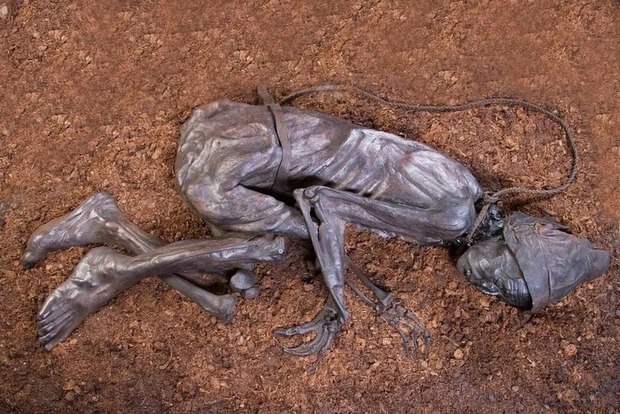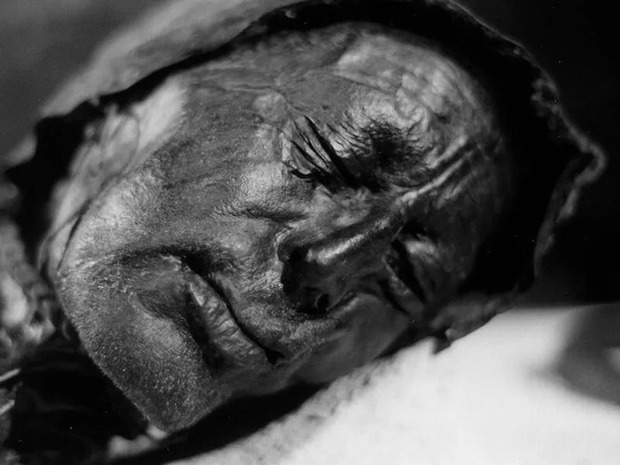The 2,400-year-old Tollund Man, a remarkably well-preserved “bog body” found in Denmark, sheds light on ancient rituals. Discovered in 1950 by brothers Viggo and Emil Hojgaard, the man was initially thought to be a recent murder victim due to his fresh appearance. However, his clothing and distinctive features, including a noose around his neck, indicated otherwise. Tollund Man’s body, preserved in a peat bog for over two millennia, still astonishes scientists.

Carbon dating places his skeleton between 405 to 380 BCE, suggesting a man around 40 years old who met a ritualistic end, possibly as a sacrifice to the gods. His facial features, internal organs, and even stomach contents, revealing his last meal of flaxseed and barley porridge, remain well-preserved.

Bog bodies, like Tollund Man, are found across Northern Europe, often associated with ritual sacrifices. The oldest recorded bog body is Koelbjerg Man, dating back 8,000 years BCE in Denmark. The bodies owe their preservation to the acidic water in peat bogs, where high salt content allows moss to thrive, releasing acid upon decomposition.

The 2,400-year-old mummy is so well-preserved that scientists can obtain Tollund Man’s fingerprints, showcasing the exceptional conditions of the bog environment. Today, these bodies continue to unveil ancient practices, their eerie preservation prompting new insights into prehistoric civilizations.
